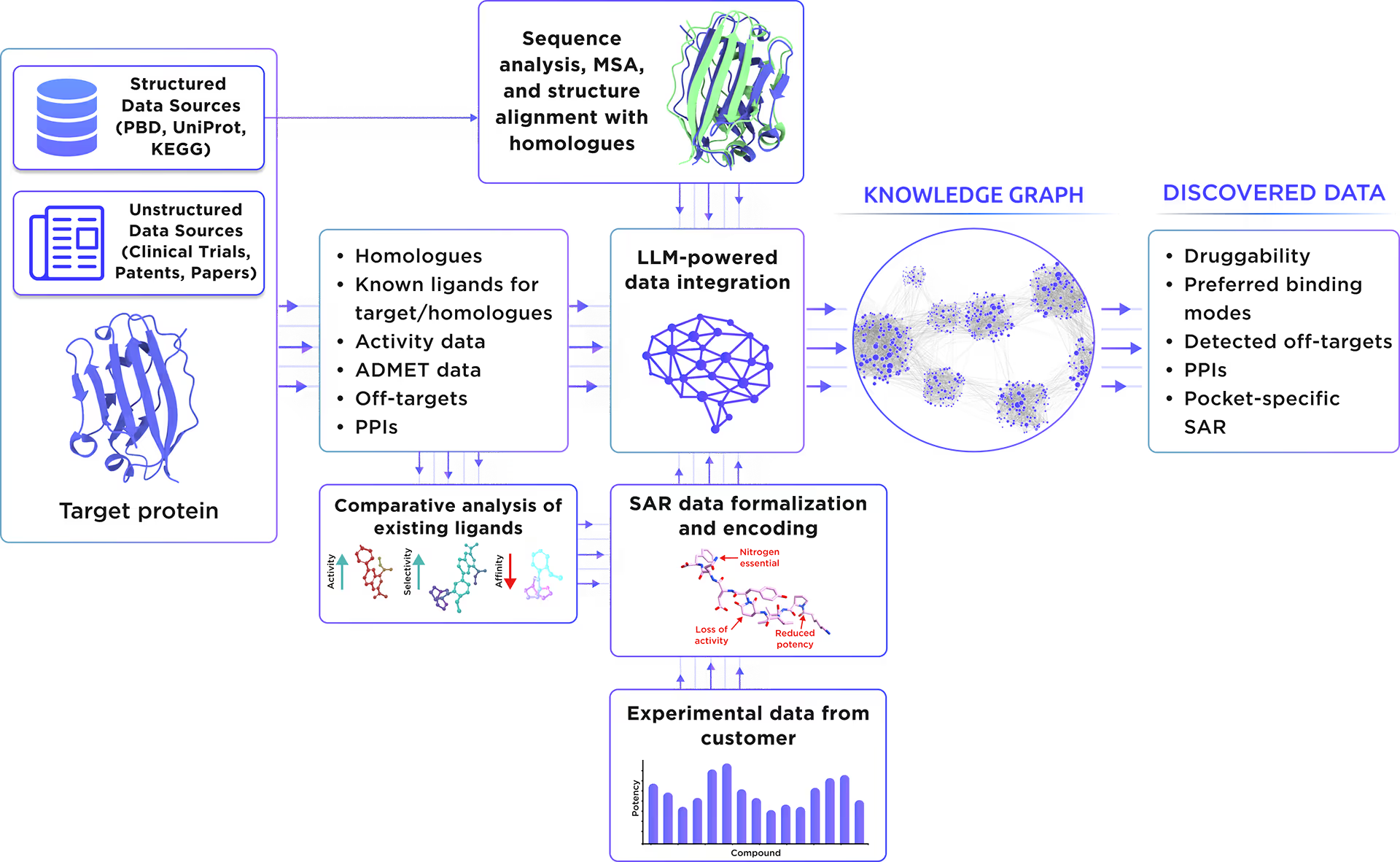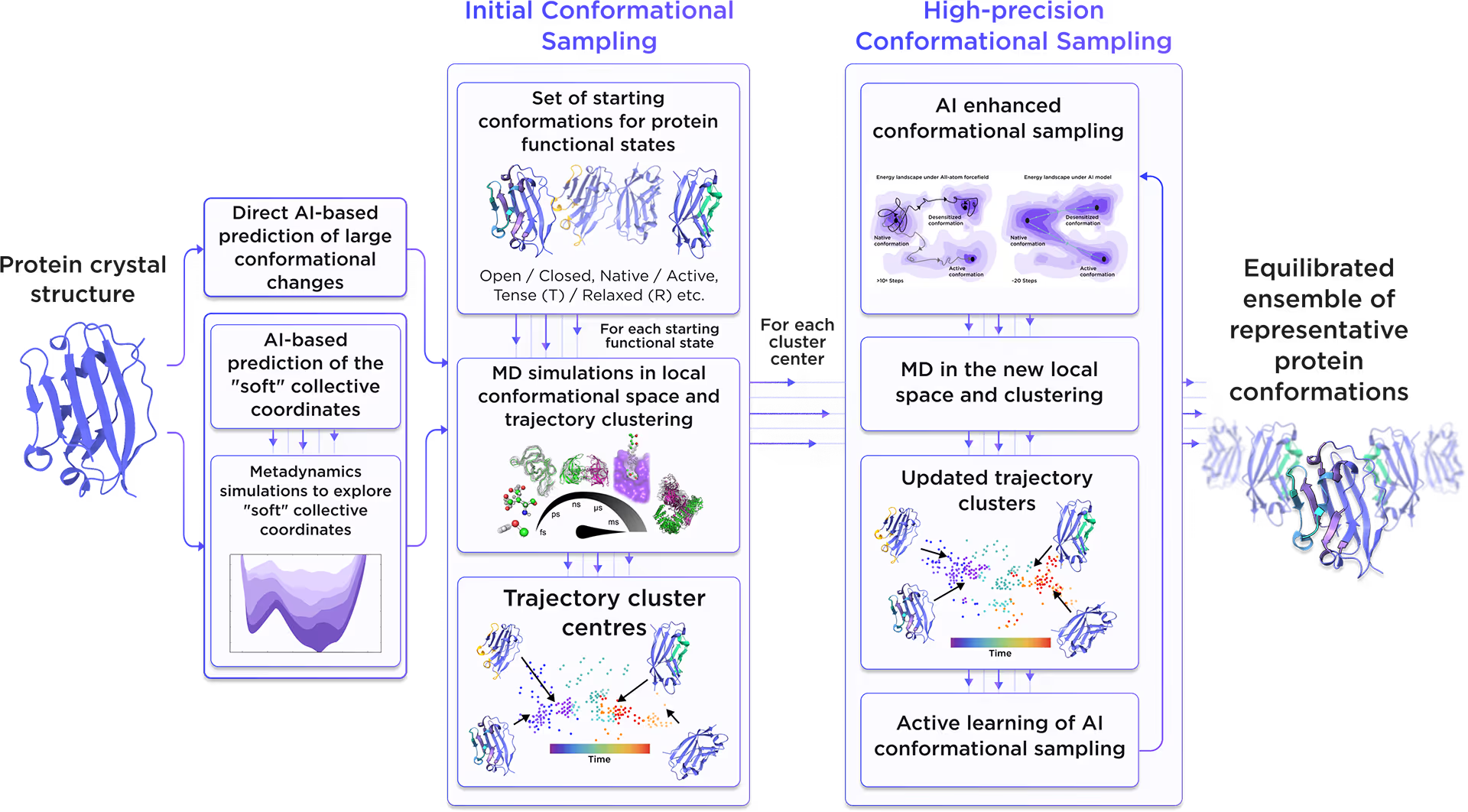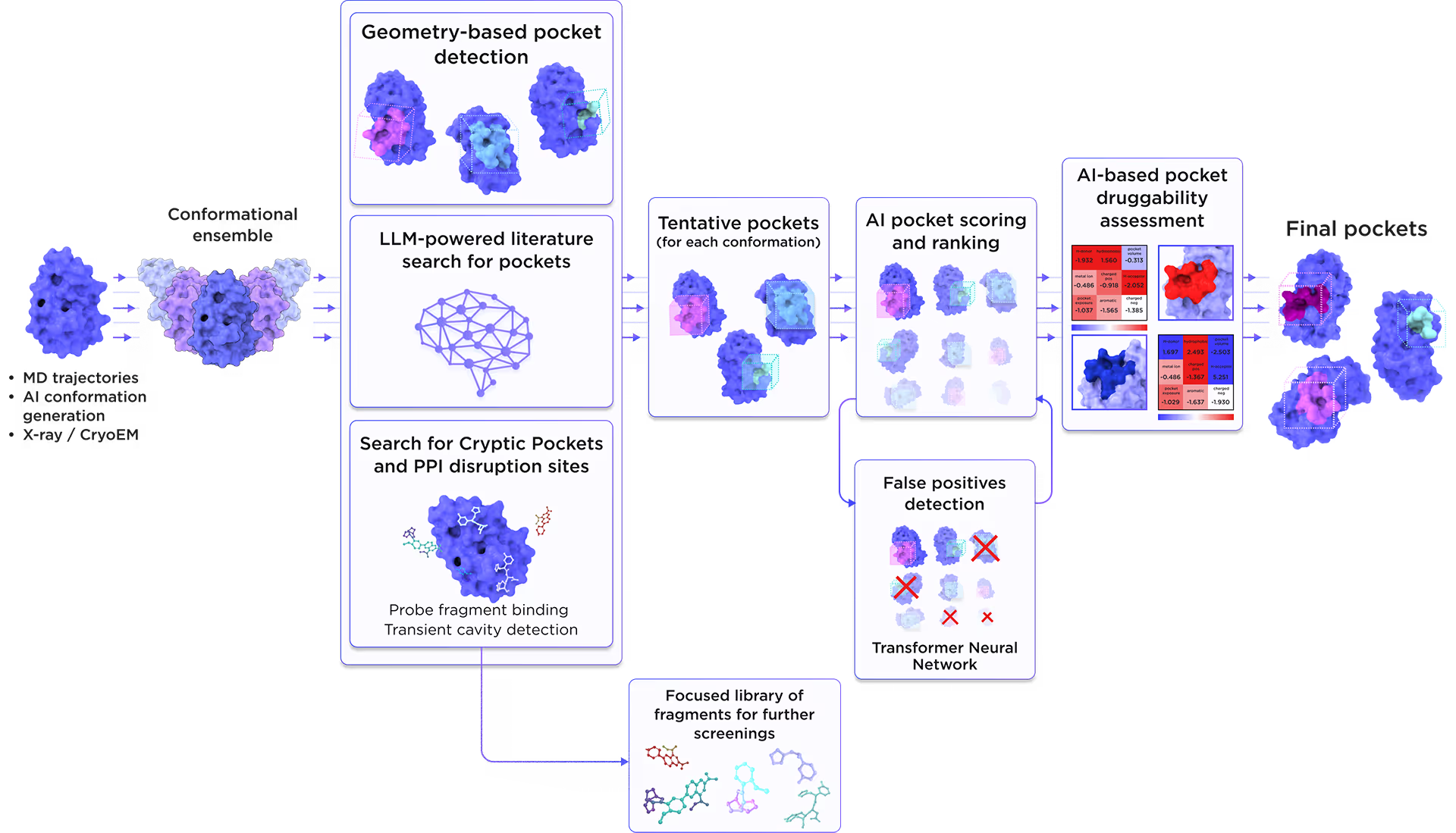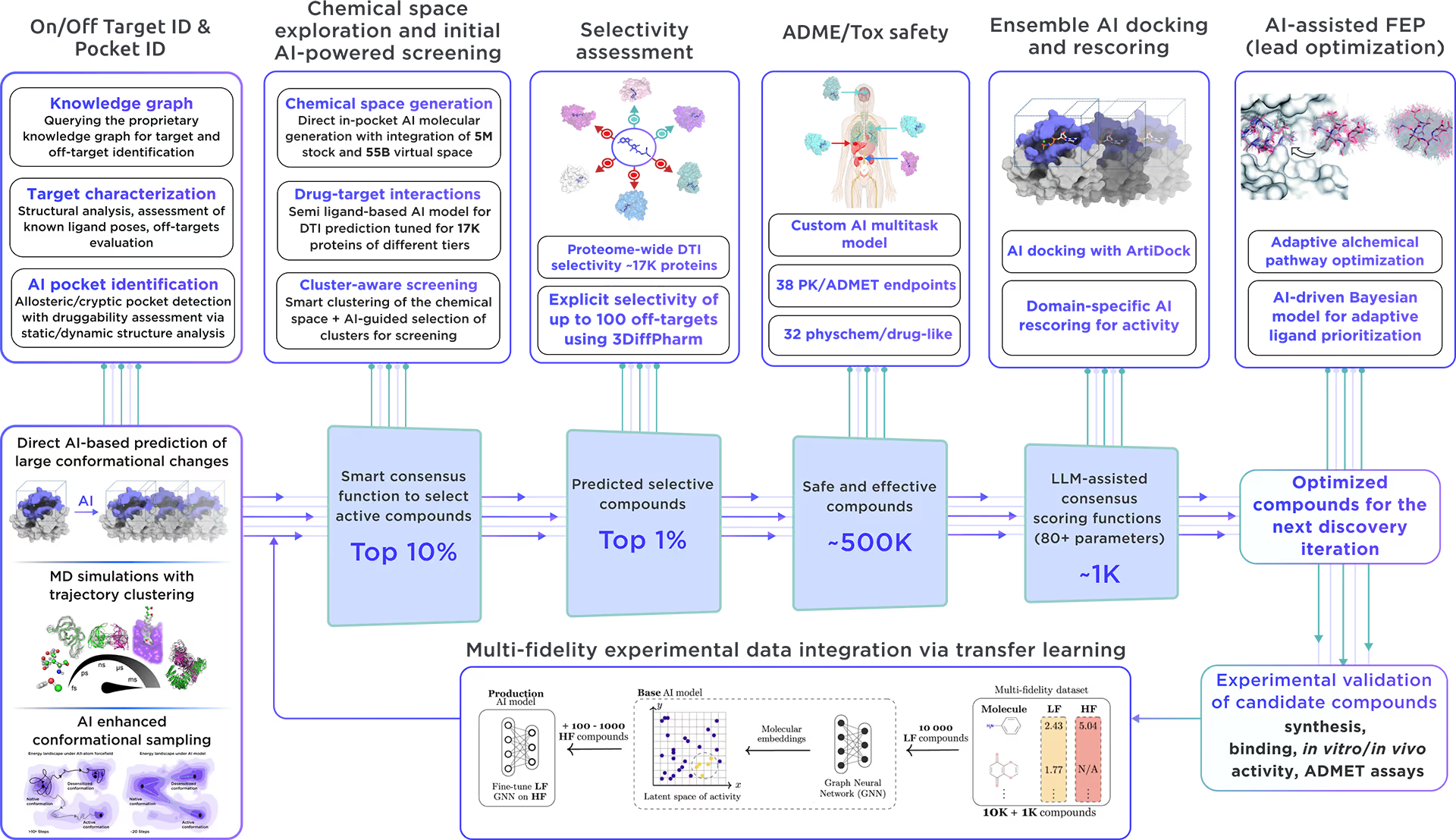

Available from Reaxense
This protein is integrated into the Receptor.AI ecosystem as a prospective target with high therapeutic potential. We performed a comprehensive characterization of Leucine-rich PPR motif-containing protein, mitochondrial including:
1. LLM-powered literature research
Our custom-tailored LLM extracted and formalized all relevant information about the protein from a large set of structured and unstructured data sources and stored it in the form of a Knowledge Graph. This comprehensive analysis allowed us to gain insight into Leucine-rich PPR motif-containing protein, mitochondrial therapeutic significance, existing small molecule ligands, relevant off-targets, and protein-protein interactions.

Fig. 1. Preliminary target research workflow
2. AI-Driven Conformational Ensemble Generation
Starting from the initial protein structure, we employed advanced AI algorithms to predict alternative functional states of Leucine-rich PPR motif-containing protein, mitochondrial, including large-scale conformational changes along "soft" collective coordinates. Through molecular simulations with AI-enhanced sampling and trajectory clustering, we explored the broad conformational space of the protein and identified its representative structures. Utilizing diffusion-based AI models and active learning AutoML, we generated a statistically robust ensemble of equilibrium protein conformations that capture the receptor's full dynamic behavior, providing a robust foundation for accurate structure-based drug design.

Fig. 2. AI-powered molecular dynamics simulations workflow
3. Binding pockets identification and characterization
We employed the AI-based pocket prediction module to discover orthosteric, allosteric, hidden, and cryptic binding pockets on the protein’s surface. Our technique integrates the LLM-driven literature search and structure-aware ensemble-based pocket detection algorithm that utilizes previously established protein dynamics. Tentative pockets are then subject to AI scoring and ranking with simultaneous detection of false positives. In the final step, the AI model assesses the druggability of each pocket enabling a comprehensive selection of the most promising pockets for further targeting.

Fig. 3. AI-based binding pocket detection workflow
4. AI-Powered Virtual Screening
Our ecosystem is equipped to perform AI-driven virtual screening on Leucine-rich PPR motif-containing protein, mitochondrial. With access to a vast chemical space and cutting-edge AI docking algorithms, we can rapidly and reliably predict the most promising, novel, diverse, potent, and safe small molecule ligands of Leucine-rich PPR motif-containing protein, mitochondrial. This approach allows us to achieve an excellent hit rate and to identify compounds ready for advanced lead discovery and optimization.

Fig. 4. The screening workflow of Receptor.AI
Receptor.AI, in partnership with Reaxense, developed a next-generation technology for on-demand focused library design to enable extensive target exploration.
The focused library for Leucine-rich PPR motif-containing protein, mitochondrial includes a list of the most effective modulators, each annotated with 38 ADME-Tox and 32 physicochemical and drug-likeness parameters. Furthermore, each compound is shown with its optimal docking poses, affinity scores, and activity scores, offering a detailed summary.
Leucine-rich PPR motif-containing protein, mitochondrial
partner:
Reaxense
upacc:
P42704
UPID:
LPPRC_HUMAN
Alternative names:
130 kDa leucine-rich protein; GP130
Alternative UPACC:
P42704; A0PJE3; A8K1V1; Q53PC0; Q53QN7; Q6ZUD8; Q7Z7A6; Q96D84
Background:
The Leucine-rich PPR motif-containing protein, mitochondrial, also known as GP130 or 130 kDa leucine-rich protein, plays a pivotal role in RNA metabolism within both nuclear and mitochondrial matrices. It is involved in late stages of mRNA maturation, possibly associated with nuclear mRNA export, and in the stability or translation of mitochondrially encoded cytochrome c oxidase subunits. Additionally, it contributes to transcription regulation, including the regulation of multidrug-related genes MDR1 and MVP.
Therapeutic significance:
Given its involvement in Mitochondrial complex IV deficiency, nuclear type 5, a severe mitochondrial disease with multisystemic manifestations, understanding the role of Leucine-rich PPR motif-containing protein could open doors to potential therapeutic strategies.